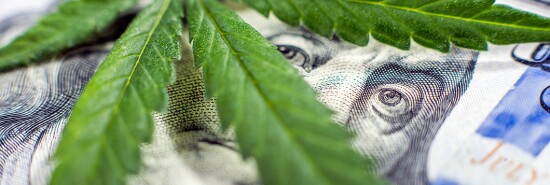
The concerning and disturbing link between marijuana use, shootings, mass violence
Christopher Tremoglie
April 20 (or 4/20 as many refer to it as) is a celebratory date for marijuana enthusiasts throughout the world. It’s a date recognized in the cannabis subculture for gleefully smoking a joint or participating in any other related activity.
Many public figures have celebrated marijuana. But as more research becomes available, science shows it may not be the whimsical herb many claim it to be. There are many significant negative consequences to using marijuana, including links to mental illness, extreme violence, and mass murder.
OKLAHOMA VOTES DOWN RECREATIONAL MARIJUANA
Sen. Cory Booker (D-NJ) recently labeled marijuana a “dangerous drug,” and it is one that “we haven’t studied enough.” These are harrowing statements from one of the most progressive legislators in the Senate. Cannabis is often celebrated in pop culture, and the push to legalize marijuana in the country has been met with widespread acceptance or at least acquiescence. If a “progressive” Democrat like Booker is warning about marijuana, it’s probably a good idea that the rest of the country start paying attention.
Research has shown a strong connection between marijuana use and extremely violent actions, such as attacks in school.
For example, in “Protecting America’s Schools: A U.S. Secret Service Analysis of Targeted School Violence,” nearly half of all attackers had a history of substance abuse, and marijuana was the substance most frequently abused. Other substances included alcohol, opiates, amphetamines, Valium, and Seroquel.
Additionally, a primary concern for those who use marijuana is the drug’s link to mental illnesses.
Multiple studies have revealed, at a bare minimum, a link between rising rates of marijuana use and an increase in those experiencing psychosis. For example, studies from Finland and Denmark revealed a “significant increase in psychosis … following an increase in cannabis use.” Another study showed that since marijuana was legalized in many states throughout the country, there has also been a substantial increase in severe mental illnesses diagnosis.
In 2011, a study from the British Medical Journal discovered that in a study that looked at 2,000 teenagers, those who used marijuana were “twice as likely to develop psychosis” compared to those that didn’t. Moreover, another study by the British Medical Journal found that 13% “of cases of schizophrenia could be averted if all cannabis use was prevented.”
In “Marijuana Is More Dangerous Than You Think,” published in the Journal of the Missouri State Medical Association (and on the National Library of Medicine website), researchers claimed that “the most obvious way that cannabis fuels violence in psychotic people is through its tendency to cause paranoia.” This is apparently so well-known that even “marijuana advocates acknowledge the drug can cause paranoia.” And, subsequently, for those with mental illnesses, “paranoia can fuel extreme violence.”
Consider other studies that have shown a connection between marijuana use and extreme acts of violence.
A study from 2012, published in the Journal of Interpersonal Violence, analyzed more than 9,000 adolescents in the United States. Based on their answers, this survey revealed that “marijuana use was associated with a doubling of domestic violence” in the country. In a 2017 issue of Social Psychiatry and Psychiatric Epidemiology, researchers studied “drivers of violence” in 6,000 men and discovered that “drug use was linked to a fivefold increase in violence.”
The drug that was used in almost every incident? Cannabis.
Another study found that those experiencing mental health incidents, such as depression, and who used cannabis were “3.2 times more likely to commit self-harm and die of homicide — often after initiating violence — than those who weren’t.” Other research revealed that “the risk of perpetrating violence was more than twice as high for young adults who used marijuana.”
Marijuana was also linked to many of our nation’s mass shootings.
For example, the shooter in Uvalde, Texas, Salvador Ramos, used marijuana and was even said to have been in severe distress because his grandmother wouldn’t “let him use marijuana.” Ramos shot his grandmother in the face before he committed the school shooting. Incidentally, the information about Ramos’s marijuana use was inexplicably and “curiously” removed from a New York Times article about the Uvalde incident.
Additionally, the shooters from Gabby Clifford’s political rally in Arizona in 2011, the movie theater in Aurora, Co. in 2012, Pulse nightclub, First Baptist Church in Texas, and Marjory Stoneman Douglas High School were all allegedly marijuana users. The person who shot former Navy Seal Chris Kyle, the subject of the biopic American Sniper, used marijuana the “morning before he killed” him.
CLICK HERE TO READ MORE FROM THE WASHINGTON EXAMINER
The use of marijuana and dangerous, extreme violence seems to be linked. Not all who use marijuana become sociopathic killers, but the evidence doesn’t lie.
Instead of celebrating or advocating the drug’s legalization, more focus should be on the devastating consequences of the push to use the drug. And instead of running from this data, hiding it, or placing a negative stigma on those who warn of marijuana’s dangers, we should be heeding their warnings.
